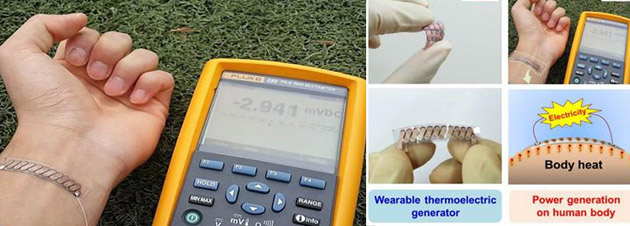
Many wearables have decent enough battery life, but you know what’ll make them even better? If we never have to recharge them at all. That’s why researchers have been developing small power sources that can generate electricity using body heat, including a team from the Korean Advanced Institute of Science and Technology. This particular group has designed a new light and flexible generator made out of thermoelectric (TE) substances printed on glass fabric. It’s far from being the first TE generator out there, but it’s a huge departure from the usual bulky and rigid ones.
via Engadget
Image: KAIST





